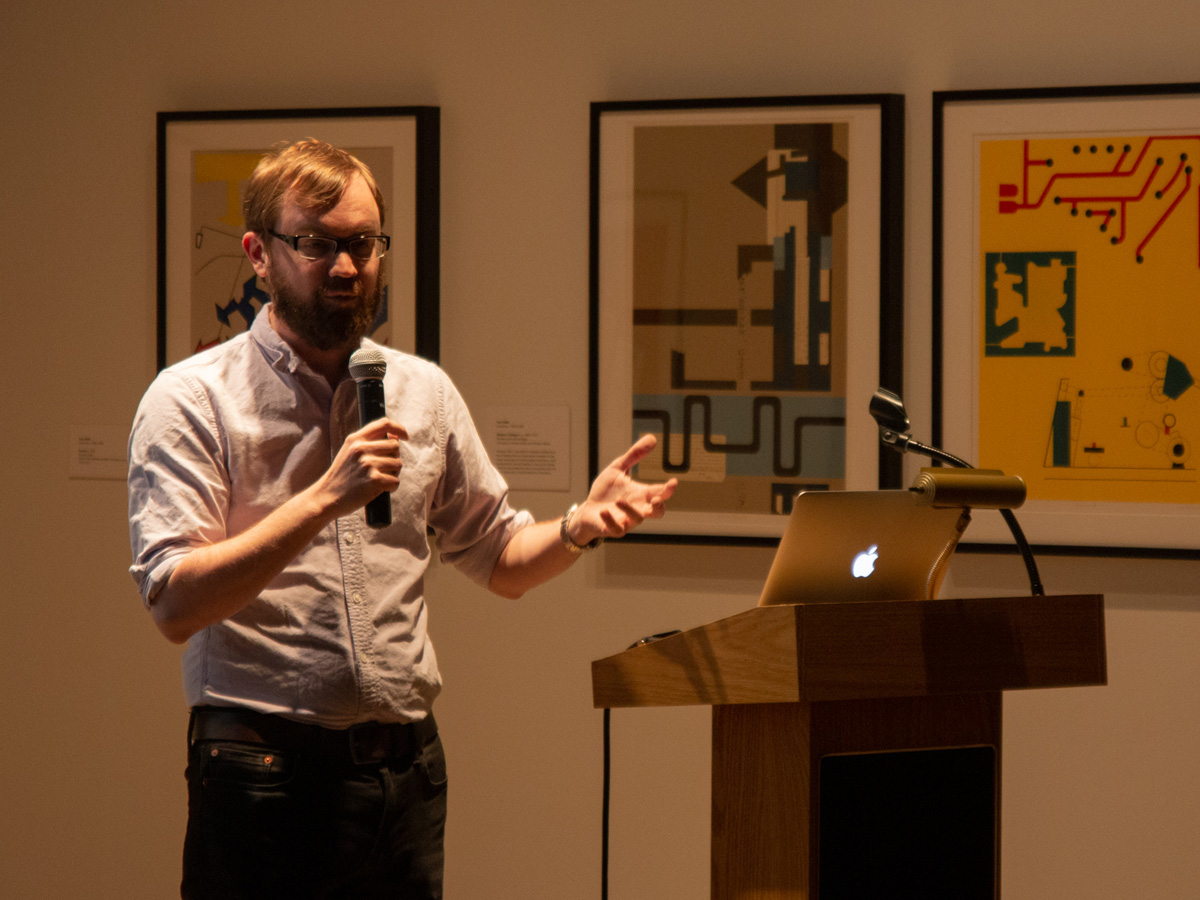Brian Amos, assistant professor of political science at Wichita State University, has dedicated numerous papers and conferences to gerrymandering research.
Amos' work is a part of an exhibition series on display at WSU's Ulrich Museum of Art, titled "Solving for X," and each show is organized by the Ulrich in collaboration with a university scholar. The museum’s goal is to work with scholars in all disciplines to create visualizations of their research and explore the potential for the museum to give the public access to the important research happening on campus.
The Ulrich creates opportunities to work with researchers to discover together how to create visual pathways to understanding. This is not making art; rather, it's a way of connecting audiences to issues in our time that matter to them and to the larger intellectual contexts for where art comes from.
Leslie Brothers, Ulrich director, believes that Amos' research is a perfect fit for the exhibition series.
"'Solving for X' seeks to showcase WSU’s most innovative research,” Brothers said. “Brian’s work is right up there. As this election cycle heats up, it will be even more important for people to understand the challenges we face preventing gerrymandering. This exhibition gives Brian a platform to make that vital information accessible to the public.”
Amos is happy to have his work on display.
"I want to educate people about the effects of gerrymandering as the redistricting process draws near. This exhibition is a big part of that effort," Amos said.
The U.S. elects politicians within geographical districts determined by population distribution, and every 10 years states redraw their own districts.
In most states, elected officials redraw districts. The process, like the people, is fallible.
Gerrymandering is the manipulation of the boundaries of a voting district to favor one party, class or race of people. It can cause severe discrepancies in who’s represented or not in U.S. politics.
It can be done subtly, so for a long time it was difficult to research.
“Sometimes it’s difficult to determine what’s gerrymandering and what isn’t. It’s easy for a politician to deny that gerrymandering ever took place,” Amos said.
Computers have made the process easier.
“The U.S. has a long history of gerrymandering, and now we have the ability to track it with highly accurate computer models,” Amos said.
Computer programs can create thousands – even millions – of very similar computer models of voting districts and compare them with the real-life boundaries. Through the models, researchers can uncover gerrymandering as it happens.
Amos created an improved computer program that can compile population demographics, including totals, density, income and racial details to create precise voting district maps.
“It won’t have the capacity to make millions of models at a time like a supercomputer can, but it will be able to make tens of thousands,” Amos said.

The next redistricting process will begin this year, but Amos expects it to take a while. In 2010, Kansas redistricting took so long that the U.S. District Court in Kansas had to step in and draw its own maps.
“Kansas has a Democratic governor. It’s likely that there will be a deadlock between the Legislature and the governor, and the court may have to step in again,” Amos said.
Amos plans to set up a course at Wichita State to conduct research on redistricting and gerrymandering. He will also continue to write and present his research.
Amos began working at WSU in the fall 2019 semester. Within his first two weeks on the job, he entered discussions with the Ulrich Museum about participating in the museum's Solving for X series.
He instructs legislative politics and political data analysis courses, and enjoys advising students interested in redistricting and gerrymandering research.


